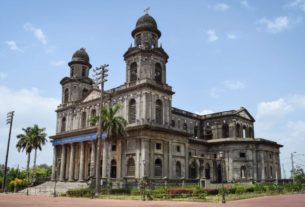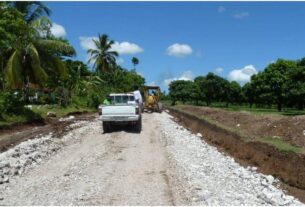Even before the earthquake, Haiti was considered a failed state. Nevertheless, the catastrophe hit the country at a time that was characterized by a tentative but nevertheless noticeable economic upswing and which was accompanied by an increase in political and social stability, and set it back years in terms of development. Reasons for the extreme effects of the earthquake are, among other things, the country’s political instability, which causes the government to be relatively unable to act in the event of a disaster, and centralization much of the infrastructure to the greater Port-au-Prince area. 40% of Haiti’s population is concentrated in this urban center; 60% of GDP and 85% of total tax revenue are generated here. The social vulnerability of this area is due not least to the almost complete absence of urban and regional planning that made this concentration possible. In addition to the urban population density, the inadequate structural fabric of most buildings due to a lack of building regulations also contributed to the extent of the destruction. The Haitian government did not have the financial, human or structural resources necessary for successful risk management would have been necessary.
The Interim Commission for Reconstruction (Commission Intérimaire pour la Reconstruction d’Haiti – CIRH) presented a plan for reconstruction in March 2010 and received a pledge of 7.4 billion euros for international aid. The Haitian government estimates the financial needs for reconstruction at US $ 11.5 billion. Of this, 48% was accounted for by the social sector, 17% for infrastructure, 15% for the environment and the establishment of a functioning disaster management system, 9% for production costs, 7% for the government and 4% for other things.
The strategy of the government’s reconstruction plan was to use the disaster as an opportunity and to proceed according to the principle of Building Back Better. The main goal should therefore not be to restore the status quo before the earthquake, but to reduce the country’s general vulnerability and make the necessary changes to the social, political and economic framework.
According to cellphoneexplorer, Haiti is a country located in Caribbean sea.The long-term goal was to develop Haiti into an emerging country by 2030. Important cornerstones of this ambitious project were a sustainable livelihood security for the population, enabling general access to a system of basic social services, education, health care, information, sport and security. Furthermore, the rights and needs of women and children in particular should be taken into account. Furthermore, the reconstruction of the land and economy should take place, which provided for a reduction of the population density in the agglomeration of Port-au-Prince and should include growth incentives for the rural regions. Also ecological aspects are in Haiti plan taken into account, especially by restricting land use and establishing a functioning waste management system.
Reconstruction was largely determined by international actors. The Haitian government could not freely dispose of the international aid funds, but had to account for their use. There is a risk that Haiti will become permanently dependent on foreign donors if the state organs and civil society cannot be able to act.
Haiti’s post-earthquake crisis sparked humanitarian intervention on an unprecedented scale. Ten years after the quake, however, the results of the efforts are disappointing, because a noticeable improvement in living conditions could not be achieved. Part of this is due to the dysfunctional, divided government led by a weak President Moise and the prevailing corruption. The government is said to have embezzled USD 2 billion alone. In addition, the NGOs are accused of having set up parallel structures and having planned past the state instead of relying on cooperation.
German and European development cooperation in Haiti
As one of the largest donors, the EU has made its contribution to the poverty reduction strategy since 2007 and finances numerous projects in the areas of humanitarian aid, education, governance, infrastructure and internal security. Foreign policy relations with Germany have traditionally been good since the 1970’s. The focus of the cooperation is on support from Germany in the democratization process and in development cooperation, especially in the areas of health care, disaster control and resource protection. However, development work was repeatedly interrupted due to political instability.
The GIZ has been working in Haiti since 2005, which is not a partner country of German development cooperation. The focus is on the promotion of decentralization, resource and environmental protection and the fight against HIV / AIDS. Since there was a temporary collapse of public order after the earthquake, Haiti is currently receiving support from GIZ in setting up the police force.
Other local organizations are currently the German Red Cross, Johanniter, Malteser and HUMEDICA, which carry out medical and orthopedic programs. Other non-governmental organizations in Haiti are ADRA, which focus on drinking water supply, Welthungerhilfe, DieDiakonie Katastrophenhilfe, World Vision, which focuses on building schools and looking after street children, and Plan Germany, which provides help through sponsorships.




